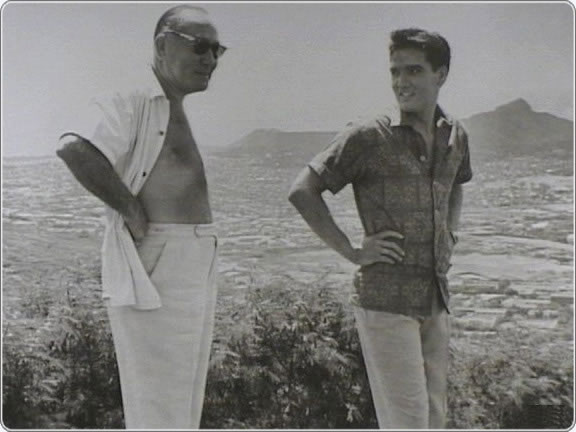Introduction:
“Blue Hawaii” by Elvis Presley is a captivating musical journey that embodies the essence of tropical romance and island paradise. Originally released in 1961 as the title track of the soundtrack album for Presley’s film of the same name, the song transports listeners to the idyllic shores of Hawaii with its enchanting melody and evocative lyrics.
From the opening notes, “Blue Hawaii” envelops listeners in a dreamy atmosphere, conjuring images of swaying palm trees, turquoise waters, and sun-kissed beaches. Presley’s velvety vocals glide effortlessly over the lush instrumentation, painting a vivid picture of love and longing amidst the beauty of the Hawaiian landscape.
The song’s infectious rhythm and catchy chorus invite listeners to sway along, evoking feelings of relaxation and bliss. “Blue Hawaii” captures the magic of escapism, offering a temporary reprieve from the hustle and bustle of everyday life.
As one of Presley’s most beloved songs, “Blue Hawaii” has stood the test of time, remaining a favorite among fans of his music and a quintessential representation of the romantic allure of the Hawaiian islands. Whether heard on a tropical vacation or simply as a means of daydreaming, the song continues to captivate audiences with its timeless charm and undeniable appeal, solidifying its place as a classic in Presley’s illustrious repertoire.

Did You Know?
Filming Location: The song “Blue Hawaii” was not only the title track of Elvis Presley’s 1961 film but also served as the primary filming location. The movie, directed by Norman Taurog, featured Presley as Chadwick “Chad” Gates, a recently discharged soldier who returns to his home in Hawaii. The film showcases the breathtaking beauty of the Hawaiian islands, providing a stunning backdrop for Presley’s musical performances.
Chart Success: “Blue Hawaii” was a commercial success, both as a single and as part of the film’s soundtrack album. It reached the top spot on the Billboard Top LP’s chart and remained there for a staggering 20 weeks. Additionally, the soundtrack spent 79 weeks on the same chart, solidifying Presley’s status as a dominant force in the music industry.
Cultural Impact: The popularity of “Blue Hawaii” extended beyond the realm of music and film, influencing tourism to Hawaii. The film’s depiction of the islands as a tropical paradise sparked increased interest in Hawaiian vacations among viewers, contributing to the state’s tourism industry.
Legacy: “Blue Hawaii” remains one of Elvis Presley’s most enduring hits and is often regarded as one of the quintessential songs of his career. Its dreamy melody and romantic lyrics continue to evoke images of sandy beaches, swaying palms, and crystal-clear waters, making it a beloved favorite among fans of Presley’s music and Hawaiian-themed entertainment.
Cover Versions: Over the years, “Blue Hawaii” has been covered by numerous artists across different genres, further cementing its status as a classic. Its timeless appeal and association with the beauty of Hawaii ensure that it remains a cherished favorite for generations to come.
Video:
Lyrics
Night and youAnd blue HawaiiThe night is heavenlyAnd you are heaven to meLovely youAnd blue HawaiiWith all this lovelinessThere should be loveCome with meWhile the moon is on the seaThe night is youngAnd so are we, so are weDreams come trueIn blue HawaiiAnd mine could all come trueThis magic night of nights with youCome with meWhile the moon is on the seaThe night is youngAnd so are we, so are weDreams come trueIn blue HawaiiAnd mine could all come trueThis magic night of nights with you